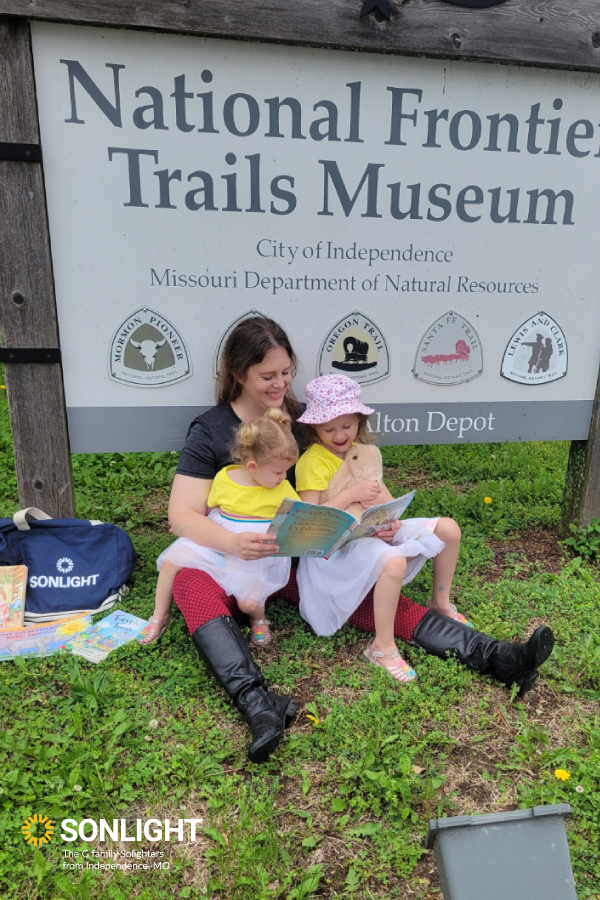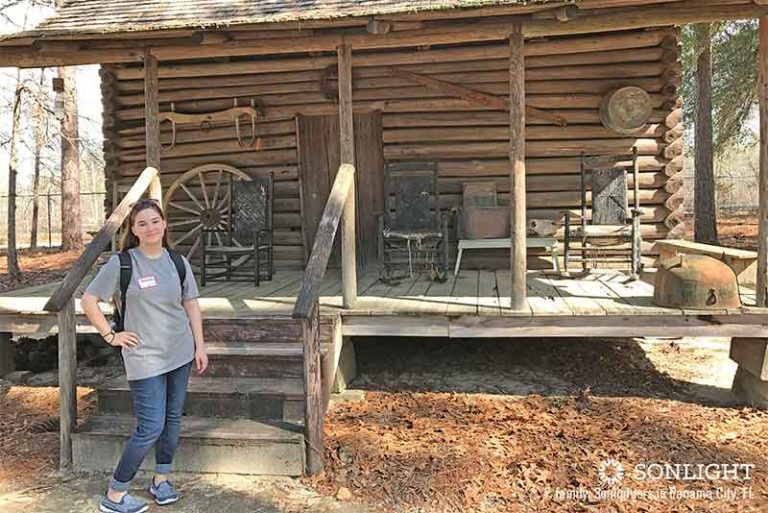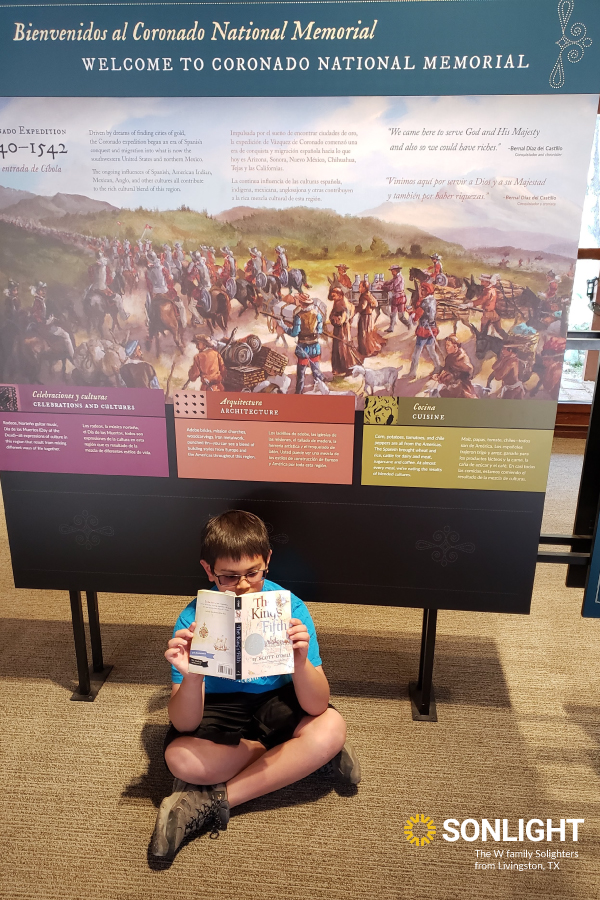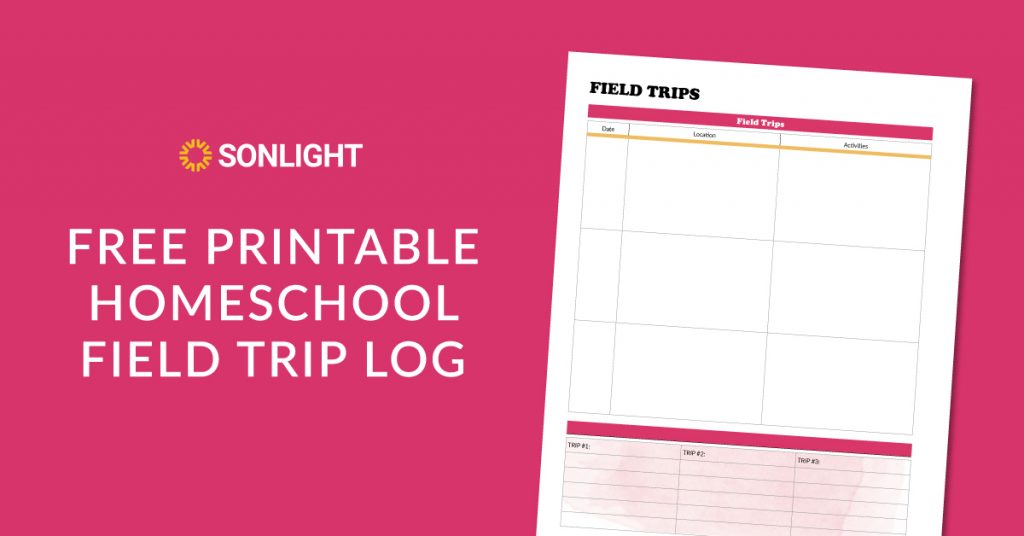Are you looking to get out of the field trip rut of zoo and science museum? This article has unique field trip ideas to add zest back into your day trips!
Not sure how to get started with field trips for preschoolers, how often to take field trips, how to plan them, or where to get a printable homeschool field trip log? This article has you covered!


Are field trips good for students?
Field trips are great for students! They are an extension of learning and one of the biggest perks of being a homeschooler. After all, how many field trips can a public school class have each year? Maybe two at best, right? They take an inordinate amount of planning for a school: boxed lunches, buses, permission forms, chaperones, etc. But as a homeschool family, you can pick up and go with much less preparation. In fact, many homeschoolers take a field trip nearly every week!
What are the benefits of a field trip?
Since you’re reading this article, you probably don’t need convincing, but here are eight concrete advantages that field trips offer your children (and you). Yes, they’re fun, and that’s reason enough! But they offer additional perks, too!
1. Real Life Learning Beyond the Books
Books are great! They are the foundation of the literature-based Sonlight curriculum. But there’s an entire world out there that can be experienced firsthand—beyond the books. While books make far off cultures and distant histories accessible to our children, there are many topics we can see, touch, and hear for ourselves either instead of (or in addition to) a book.
- So don’t only read about Native Americans. Visit an Indian mound museum and go deeper! Attend a public pow wow to observe and ask questions.
- Don’t just read about plant root systems. Visit a local nursery or botanical gardens and get pointers from the professional gardeners who serve there.
2. Socialization
One of the best parts of homeschooling is being able to open our front door and use our community as a classroom. So much for the stereotype of unsocialized homeschoolers! No way! Homeschoolers are out and about in the community, going on field trips, and interacting with all kinds of people.
3. Motivation
Getting outside the house, exploring new places, and immersing yourself physically in a topic is an ideal way to erase monotony. When you find you’re falling into a boring rut with your homeschool schedule or attitudes are getting prickly, take a field trip! Mix things up! Take an adventure with your kids and experience the wonder of the larger world alongside them.
Field trips raise spirits, renew zest for learning, and give kids a break from the challenging tasks of pencil-to-paper work.
Field trips can be used as a culminating activity after a unit of study—a reward after a period of challenging academic work.

4. Retention
The more senses that are engaged when learning something, the more likely it is to be retained. Field trips are memorable, so kids tend to retain what they soak up on these outings.
5. Family Bonding
Field trips can smooth over the normal annoyances of homeschool family life. Instead of fussing about folding laundry, leave the chores and go explore the zoo! You’ll laugh at the antics of the animals instead of crying over math.
You and your children will create lasting memories of shared moments. When they are adults, these field trips (no matter how simple) are the things they will remember and cherish! So make more happy memories by taking more field trips.
6. Exercise
Many field trips involve quite a bit of walking. Some may even include climbing, leaping, and other physical exertion. In our tech-driven world, let’s not forget that we have bodies that need to move for optimum health! Field trips provide an ideal catalyst for meaningful movement.
7. Awe
Experiencing a sense of awe is a remedy to depression and anxiety. What a gift for our children, and one that we parents need as well!
God’s creation is amazing! So the potential for awe awaits you at any nature-focused field trip destination. Go! And then look, smell, listen, and feel. Let your senses absorb the wonder of God’s creation. The mindfulness and delight will lift your spirits!
8. Small Steps of Career Exploration
In some cases, a field trip gives kids a window into possible career fields. They can get a feel for workplaces and ask questions of the professionals who work there.
What are the disadvantages of a field trip?
The advantages of field trips practically negate the possible downsides, so don’t let these discourage you! But field trips can be a disruption to your normal routine (a feature, not a bug!).

There are field trip logistics that can be possibly annoying: driving distance, parking, where to eat a picnic on premises, rough terrain that makes pushing a stroller a challenge, finding diaper changing facilities, etc. Again, pushing to find solutions is worth the benefit your family gets from the outing!
Some field trip destinations can be pricey, but free homeschool field trips exist! Be sure to ask your desired venues about family passes, special discount days, or community events that are free of charge. Alternate free homeschool field trips with paid field trips to keep costs low, and carpool with another homeschool family to save on gas. Skip the gift shop and take a picnic instead of eating at the kiosks. There are ways to make field trips doable even with a tiny budget.
Bad weather can ruin an outside field trip, but you have the flexibility to move that trip to a prettier day!
There aren’t really any disadvantages inherent in field trips for homeschoolers. But there are small irritations of life that come along with any kind of day trip.
What are good field trip ideas?
The sky's the limit, but here are forty-two suggestions to get you started with homeschool field trips for all ages and grades. Start with lower cost local field trips, and then expand out to more distant destinations as your children mature.
- caves
- theater, opera, or ballet performances
- concerts
- local house of worship, especially of a faith that is not your own (Muslim mosque, Hindu temple, Jewish synagogue, Greek Orthodox church, etc.)
- factories (like a bakery or an automotive factory)
- fish hatchery
- orchard, farm, or farmers market
- local power plant
- bike trails, hiking trails, or river canoeing
- space centers
- water treatment facility
- cemetery tours
- city capitol or state capitol, including the courthouse
- historic landmarks like battlefields or birthplace museums (think famous artists, musicians, athletes, writers, presidents, etc.)
- archaeological dig
- fire station, ambulance, or police station
- the post office
- a US mint
- historic reenactments
- Native American pow wows
- festivals
- county fairs
- air shows
- science museums
- college tours
- science lab tours (could be industry or educational)
- planetarium
- observatory
- dams and bridges
- arboretum, botanic gardens, or greenhouse
- aquarium, zoo, or wild animal park
- local or county parks
- state parks and forests
- national parks
- recycling center
- animal shelter or veterinarian’s office
- food bank, homeless shelter, or other charity organization
- semi-professional sporting events
- amusement parks
- military bases
- TV station or radio station
- music recording studios
What are the types of field trips?
The weather will influence your choice between indoor field trips and outdoor field trips. Your budget impacts your decision between free field trips and trips that cost money.
And your own preferences for planning will affect whether you go for easy field trips or those that take more advance preparation. For example, venues like zoos, galleries, and museums are already optimized for easy field trips. But there are a myriad of other locales that can make for a great field trip when you connect with someone who can arrange it for you—think local newspaper, the fire station, a historic house of worship, or a local factory.
There are local field trips and more distant trips. Typically a field trip is a day trip—you return home the same day and sleep in your own bed.
Free Family Travel Guides from Sonlight
But some field trips expand into complete family vacations like these two East Coast destinations for American history buffs.
A Family Travel Guide to Historic Williamsburg
One ticket. Five parks. Seven days. An unforgettable trip. Virginia is home to some of the greatest historical landmarks of colonial America. The Historic Triangle provides a peek into America's journey from English settlement to the independence of a new nation. When you are ready to visit, make the most of your time with these practical, tried-and-true tips.
Navigating Thomas Jefferson's Monticello
Enjoy a day or a long weekend exploring Monticello and the surrounding area. Visiting this estate can be a wonderful addition as you study American History. Download this full-color free digital travel guide today to help you navigate Monticello and all the additional historical locations surrounding Monticello.
What are the most popular field trips?
The most popular homeschool field trips are those locations that are already set up for large groups with ample parking, pre-designed tours, clearly defined hours, and even amenities like picnic areas or shuttles/trains.
These family pleasers have rotating exhibits or frequent workshops/events that deliberately cater to homeschool families. Examples are
- nature preserves
- botanic gardens
- zoos
- art galleries
- science museums
- history museums
- historic sites
- aquariums
- and national or state parks
These locales are typically large and well-established. Visit their websites to see what they offer. Sign up for their email newsletters so you’re always in the know about special events, bargain days, and new exhibits.
Field Trip Planning, Preparation, and Printables
Some field trippers spontaneously jump in the car and head off for an unscripted adventure. But most moms probably prefer to set the stage with some basic groundwork. In fact, field trip planning can be part of your annual curriculum shopping as you lay out a course for your school year.
Free printable homeschool field trip log
A homeschool field trip log can pull double duty as a place to record your plans beforehand and/or a place to document the trips you took afterwards. If you’re required to keep a homeschool portfolio or verify a certain number of school days, a homeschool field trip log is essential! (Don’t rely on your memory alone. Record those field trips!)
Download a free homeschool field trip form here to use as you work through the seven steps below.
(This free page is taken from the larger Sonlight Planner.)
PRO TIP: Print multiple copies (or sets)—one for planning and one for recordkeeping.
How do you plan an educational field trip?
For those of you who like to plan ahead, here are seven steps for making a comprehensive field trip plan for your homeschool.
1. Brainstorm fun homeschool field trip ideas
This is the fun part! Looking at the list of 42 suggestions above, jot down the ones that seem appealing to you and your children.
Alternatively, consider your curriculum. What are you studying this term or year? What field trips can you plan to go along with the science and history topics you’ll be covering? What Readers and Read-Alouds have field trip tie-ins?
Don’t rule out field trips for teens! Advanced courses mesh well with learning excursions! Here are some examples:
- Biology field trip ideas: a butterfly vivarium, an Audubon Center, a wolf preserve
- Chemistry field trip ideas: a manufacturing laboratory, a college research lab, fire department, wastewater treatment plant
2. Look for specific locations
Head to Google and input your desired type of field trip. For example, when you search TV station tour, your local station will likely pop up with contact information to get started! Or search for planetariums near me. Yelp and Tripadvisor are two great apps for reading user reviews of many field trip destinations.
3. Outline the logistics
Once you have specific venues in mind, start charting out the details like hours of operation, ticket costs, special tours/exhibits/workshops, etc.
4. Contact the specific venue for insider information
Don’t be nervous to send an email or pick up the phone to inquire about details. Even established venues like museums and zoos may be able to offer you special accommodations or workshops as long as you let them know you’re coming.
Directly ask for insider tips: “Is there anything else that I should know before we come? Anything that’s not on the website?”
5. Make a field trip calendar for the year
Now you have the information you need to start filling out an annual field trip calendar. Pencil in your ideas based on your curriculum, the weather, and other family events. It’s common to have a monthly field trip, but you may want excursions more or less frequently.

6. Consider providing structure to the trip—or not!
There are different approaches to taking a field trip. Some families drop all the academics and simply enjoy the experience, letting the fun unfold naturally.
Other families read about the place beforehand and assign homeschool field trip activities. These activities provide structure to the trip by giving kids a task to focus their exploration:
- a worksheet to fill out
- a journal for sketching
- a scavenger hunt
If your children tend to race through an exhibit without truly appreciating anything, an on-site assignment can help slow them down and center their attention on key facts.
Check with the venue ahead of time because many of them already offer these activities either in hardcopy when you enter the destination or in digital format for you to print at home.
PRO TIP: If you expect your child to do a written activity at the field trip, bring clipboards or bring homeschool field trip journals with a cardboard backing.
There’s no right or wrong here, but realize that you don’t have to add anything school-ish to justify a field trip. It’s enough to simply soak in great works of art or wander around an arboretum. Your kids are learning!
7. Consider review or documentation—or not!
Once you’re back home, you may want to document the trip or review what you experienced. Again, this step is optional and doesn’t have to be formal or burdensome.
How to write a homeschool field trip report
For upper elementary ages, middle schoolers, and high schoolers, it’s appropriate to assign a written project. This homeschool field trip report can take the format of a notebooking page, a journal entry, a scrapbook page, or a short composition.
Here are the basics to include in a field trip report:
- the date of the trip
- the full name and address/location of the destination
- the significance of the location (if historic)
- the primary places/exhibits/topics that were experienced along with a brief description of each
- insights, opinions, and reflections
Add these extras to add to the field trip report to make it more of a homeschool field trip journal:
- maps
- diagrams and sketches made at the venue
- brochures
- photographs or postcards
- actual items from the site (where allowed, of course) such as leaves, moss, feathers, etc.
You could help your kids write a review of the location to post on Google, Yelp, or Tripadvisor.
Or maybe you simply have a discussion about what you experienced. Here are a few discussion starters:
- What was your favorite part of today? Why?
- What surprised you today?
- If we do that field trip again, what would you like to spend more time doing?
- Tell me 3 facts about [topic, person, place].
- Imagine you have to convince someone to go on a field trip to that place. What would you say to them?
- Quiz me/your sibling by asking me three questions I should have the answer to after our field trip today.
What to carry with you on a field trip?
If you’re not sure what to take along on your field trip, call the venue and ask! Find out what kinds of amenities they offer and what they suggest.
Aside from that, you already know the basics: snacks, wipes, a few adhesive bandages, drinking water, sunscreen, hats, etc.

Unique field trip ideas
Because field trips have the potential to be so powerful, and because we have such an abundance of resources in our communities, it’s important to think beyond the norm to get our kids—and ourselves—out there, gaining fresh experiences and better understanding. Nearly any place that’s not unsafe for kids has the potential to be a field trip destination.
Any process, any job, any business has fascinating aspects to uncover on a family field trip for homeschool. Simply drive around your community with an open mind. Nearly every business you see is potential fodder for a field trip!
- That locally owned coffee shop? Yep!
- The beauty parlor? Why not?
- The dentist’s office. For sure.
- That manufacturing plant? Probably!
Start with your connections. Ask friends about their place of work, their family businesses, their connections. Having a contact smooths the path to set up a family tour and an unlikely field trip destination. Most folks are thrilled to show off what they do to a handful of kids (and an interested parent). So don’t be afraid to ask!
Your community is full of experiences, and those experiences can easily be tied to your curriculum. Here are four examples to get you started with fun homeschool field trip ideas:
1. Small Engine Repair Shop Field Trip
Kids (and adults) of all ages will be fascinated to see what goes into maintaining and repairing the many machines we use every day. Lawnmowers, chainsaws, generators, and scooters all fall under the small engine category.
The history of these machines is intriguing, and it’s a great introduction to more complex engines, too! This field trip ties in nicely with any of these books (or programs):
- Richard Scarry’s What Do People Do All Day
- Sonlight’s Science H- Technology
- A History of US
- The Story of Eli Whitney
2. General Aviation Airport Field Trip
Even better than flying on a commercial airliner is the experience of walking and talking with the pilot of a General Aviation (GA) plane. These smaller models operate under the same principles, and are in much wider use than the jumbo jets we board to fly cross country. You may be able to arrange to tour the actual facility or even take a short flight! If you’re reading these books, a field trip to an airport fits well:
3. Ethnic Food Market Field Trip
Pick a country, and find a shop! From the delicacies of Asia to the exotic (to us) foods of the Middle East, chances are excellent that you’ll have a market hidden somewhere in your community that specializes in foods of other lands. While you can order individual items online, nothing beats walking the aisles, smelling the smells, and seeing what’s on offer on the shelves.
There are so many Sonlight books that tie in to this field trip, but I’d be remiss if I didn’t point out that HBL F: Eastern Hemisphere is crying out for a whole year of such outings!
4. Radio Station Field Trip
If you’re reading Catching Their Talk in a Box or Window on the World, or your child is studying physics, definitely make time for a trip to a local radio station. Choosing a smaller, local station to tour means the chance to walk into booths and likely get an up close and personal glance of the inner workings of a broadcast in progress. Missionaries of the past and present have utilized radio as an evangelism tool, and the science behind it is fascinating.
Where to get the best homeschool field trip ideas

Need inspiration for field trip ideas for kids? Marry books and field trips as often as you can to cultivate an adventurous learning environment. Here are examples:
- Visit an aquarium after Dolphin Adventure.
- Tour an art museum after From the Mixed-Up Files of Mrs. Basil E. Frankweiler.
- Trek to a farm after Mountain Born, Thimble Summer, or The Year at Maple Hill Farm.
Getting out and seeing firsthand the elements of a story or work of nonfiction cements it in our understanding. Not only do children hear how the mail system works in Richard Scarry’s What Do People Do All Day, but then they see it in action when they visit the post office. All the senses are engaged!
The details that may have escaped them in the book are suddenly prominent and yes, maybe even a door is opened to a new occupational calling. You just never know!
Suggested Field Trips by Age
The list of 42 ideas above are for all ages, stages, and grades, but admittedly some destinations are more suitable for younger or older students. Here’s how to work out your field trip decisions based on ages or grades.
Field trips for toddlers & preschoolers
Since toddlers and preschoolers are probably still napping, you want local field trip ideas that won’t require lots of driving. Thanks to the mid-day pause for nap time, you’ll choose trips that can be done in the morning or afternoon but don’t demand a full day.
Avoid stodgy venues where quiet is expected and children can’t touch things. Instead opt for field trips with lots of hands-on, active exploration and frequently changing things to observe.
Your best bets are anything related to animals:
- zoos
- aquariums
- animal shelters and preserves
- an aviary
- butterfly gardens
Or any venue that has a nature or science slant:
- children’s museum
- arboretum or botanic gardens
- science museum
- parks
Call ahead or scour the website to find programs or exhibits especially designed for very young children to touch and physically experience the content.
Children at this age are still developing vocabulary, so exposing them to new experiences and talking about what you see is invaluable.
Outdoor or large open spaces where it’s okay to run are ideal for little kids. And you’ll want to consider field trip spots where strollers can drive easily when little legs finally tire.
Keep field trips short in duration and leave while everyone is still happy!

Homeschool kindergarten field trip list
Although some parents consider kindergarten their first year of formal schooling, there’s no need to restrict yourself to learning at the kitchen table with books, pencil, and paper. Field trips are rich learning experiences for 5-year-olds since so much of the world is brand new to them!
During grades K-2, think of field trips as opportunities to expose your child to the larger world and don’t worry about retention or academic tie-ins. Just get out there and immerse yourself in the joy and awe of all the field trip options in your local area.
Save the elaborate, far-off destinations for later years when your child has more maturity and physical stamina. At the kindergarten through second grade level, you’re still enjoying repeat visits to the places you frequented during the toddler and preschool years:
- zoos
- aquariums
- animal shelters and preserves
- an aviary
- butterfly gardens
- children’s museum
- arboretum or botanic gardens
- science museum
- parks

Now your visits may last a bit longer (no need for that daily nap!) and may include more actual academic material. For example, you may stand and listen to a zoologist give a short talk or show your child key facts on a display board.
You’ll want field trips at this stage to still be very tangible. For example, touring a cave where a child can touch the damp stone, smell the wet air, and hear water dripping is more age appropriate than an opera, a tour of a house of worship, visiting the county courthouse, or a science lab excursion where the experience is more abstract or passive.
Opt for trips where you can get your kindergartener involved:
- picking strawberries at a farm
- making gravestone rubbings in a cemetery
- making a sculpture in a special kids room at the art museum
How often should you do field trips in kindergarten homeschool? As often as you and your kindergartener would like to! Aim for at least monthly at this age, giving yourself a few mulligans to skip a month here or there depending on other family dynamics, health concerns, etc. Your kindergarten field trips could be as often as weekly if your family is up to it!
Field trip ideas for elementary students
Grades 3-5 are a sweet spot for homeschool field trips! These children have the physical stamina for full day trips and are growing in the mental maturity to appreciate more abstract types of experiences. They generally have the self-control not to touch what shouldn’t be touched. They are curious and can ask great questions of docents and guides. You’ll see children at this stage start to make connections between their book-based lessons and what they experience on field trips.
So basically, anything from the 42-item list above that interests your elementary students is fair game! Even if some of the content goes over their heads, it’s still exposure to new ideas! If a field trip seems a bit too advanced for your elementary student, just cut it short or inject additional context to make it more understandable for them.
Virtual field trips for homeschoolers
What can you do instead of field trips? The pandemic has taught us all the value (and yes, limitations) of virtual experiences as a substitute for in-person events. Sometimes a field trip is simply out of reach. In those situations, turn to virtual field trips to meet the need.
How does a virtual field trip work?
With a virtual field trip, you use the magic of the internet to explore a place you can’t visit in person. You rely on live cams, 360° virtual tours, virtual reality tours, and even live online video conferencing sessions held on-site.
If these tools are new to you, here are fun homeschool field trip ideas that are totally online:
- Old Faithful Geyser live webcam
- The giraffe cam at the San Diego Zoo
- The Louvre online tour
- National Museum of Natural History virtual tours
- California State Parks Home Learning Programs
- Center for Interactive Learning and Collaboration programs
What are the best virtual field trips for students?
Large and well-known zoos, science museums, art galleries, and history museums make for the best virtual field trips simply because they tend to have top-notch websites with the video tours and live webcams you’ll want to access. State and national park systems are good options as well. Smaller venues, while fascinating in person, often don’t have the digital resources to provide a great virtual field trip experience to online users.
Here’s a list of virtual field trip favorites:
- Virtual Tour of the Great Wall of China
- San Diego Zoo
- Mars (via NASA)
- Monterey Bay Aquarium live cams
- Farm Food 360
- Boston Children’s Museum virtual tour
- Paris Catacombs virtual visit
- The Vatican virtual tour
- Virtual tours: Buckingham Palace
- Anne Frank House
- The White House 360 virtual tour
- Virtual Field Trip to the Butterfly Conservatory
- Metropolitan Museum interactive map
How do I create a virtual field trip for students?
1. Choose a website (or a series of related ones).
The education departments of zoos, museums, and parks strive to make their facilities accessible to the maximum number of users, so scan their websites first for all the resources they have to offer: curriculum, printables, videos, virtual tours, live web cams, live and recorded workshops, lesson plans, etc.
2. Set your child loose on the website to freely explore.
You will likely want to be nearby to enjoy the discovery process alongside them.
3. Or give your child an activity to do while exploring.
This step is totally optional. But if you feel the need to document the learning, there are plenty of ways to do it! Provide more structure with printables, worksheets, scavenger hunts, or notebooking pages.
Choose a curriculum that does the planning for you so you can spend more time on field trips with your kids.












This was a great article! Thank you for putting all that information together. I can't wait to really start planning our field trips for this year.